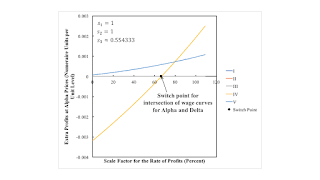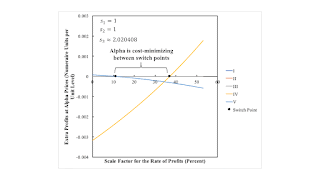| Hakim on the Economic Calculation Problem |
Reactionaries often bring up the Economic Calculation Problem (ECP) as a fatal objection to socialism, considered as entailing central planning. Ludwig Von Mises put this forth in 1920 as an argument in principle that central planning is guaranteed to be highly inefficient. He postulates that the planning authority knows the prices of consumer goods and all technical possibilities, including the endowments of originary factors of production. But without prices of intermediate goods, the planning authority cannot make rational decisions about how to produce commodities. Like Enrico Barone, Von Mises insists the planning authority must re-introduce prices for intermediate goods and a market for 'capital'.
Friedrich Hayek changed the question. He argued that efficient central planning was impractical, not impossible in principle. For Hayek, prices bring about a coordination among entrepreneurs of their plans and expectations. Hayek raised the question on how the planning authority could gather the data they need for their equations. He emphasized dispersed tacit knowledge of time and space.
I emphasize that what the ECP is is disputable. Also, it is inapplicable to the ideas of anarcho-syndicalism, council communists, and so on. Anyways, this post poses some problems with using the ECP as an objection to socialist central planning.
Magnitude of costs of failures of coordination. Neither Von Mises nor Hayek attempt to estimate the costs of a failure of coordination. Since they say a capitalist economy will always be in a disequilibrium state, capitalism will also suffer costs of discoordination at any point of time. How much more are the costs in a centrally planned society, as opposed to a capitalist society? What is the empirical evidence that the ECP was a major problem for the U.S.S.R?
Externalities. For economists of the Austrian school, the extent of the coordination of plans and expectations of diverse agents is a criterion for welfare economics. This approach contrasts with the maintream marginalist criteria of Pareto and Hicks-Kaldor efficiency. The approach of the Austrian school does not seem to me to adequately account for externalities, such as global warming. To Von Mises' credit, he does bring up the destruction of the unpriced natural beauty of a waterfall in discussing its use for power generation.
How do prices bring about coordination? To me, when Hayek describes economic coordination, he is describing something like Hicks' model of temporary equibrium, as in Value and Capital, or the Arrow-Debreu model of intertemporal equilibria, as in Debreu's Theory of Value. Much research suggests such a coordinated state cannt be expected to be brought about by disequilibrium market processes. (Issues exist in how my favorite model can describe trends in capitalist economies, particularly in accounting for if joint production.)
Mises is mathematically mistaken. Suppose prices of commodities provided as components of final demand, technical possibilies, and endowments of originary factors of production are given to the Ministry of Planning. The level at which to operate each production process is found as the result of the solution to an optimization problem. One does not need prices of factors of production to solve the primal problem. Such prices emerge as the solution of the dual problem. Von Mises' mistakes and dogmatism may have been useful in that they encouraged others to explore one approach to price theory.
Mises and Hayek misunderstand capitalism. Anyways, most prices in a capitalist economy do not communicate knowledge like Hayek describes. They do not continuously fluctuate under the influence of supply and demand. Rather, prices of manufactured commodities are usually full cost prices or administrated prices, set by firms. Variations in the level of output, inventories, and queues of orders are of some importance.
Above, I have not said anything about improvements in computer networks or computer speed. I do not see how IBM'a North Pole computer (Modha's blog) would be helpful in linear programming. Hakim recomments Cottrell and Cockshott (1993) for those who want to know more about the ECP. I have not read The People's Republic of Walmart, which some recommend.














